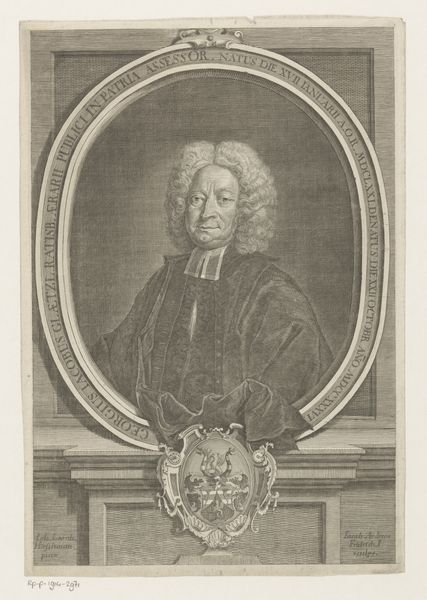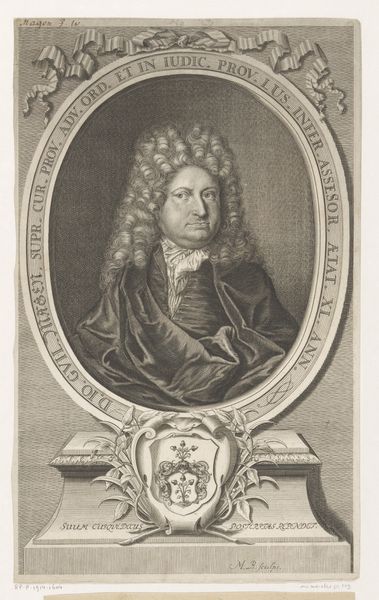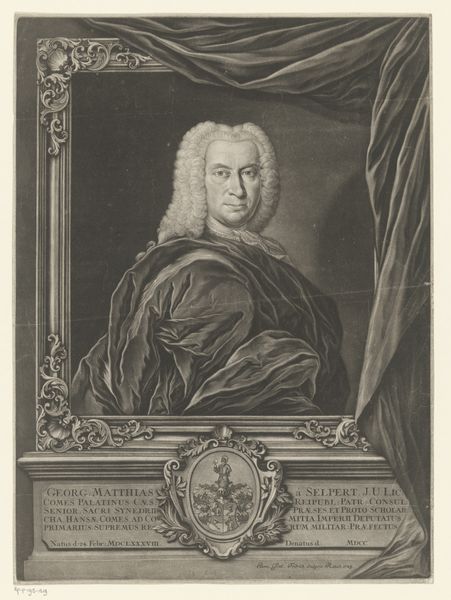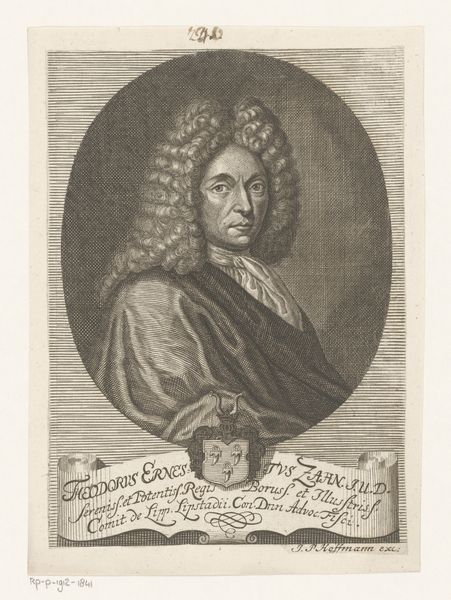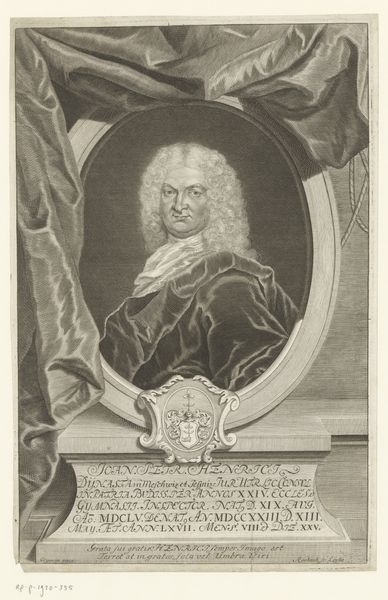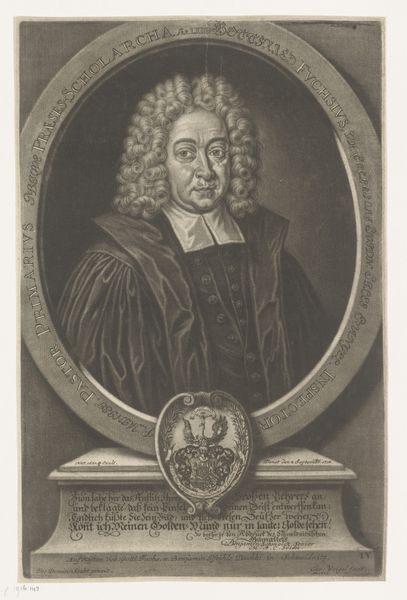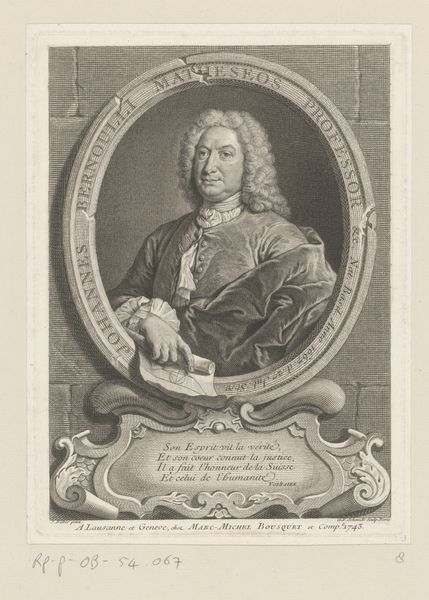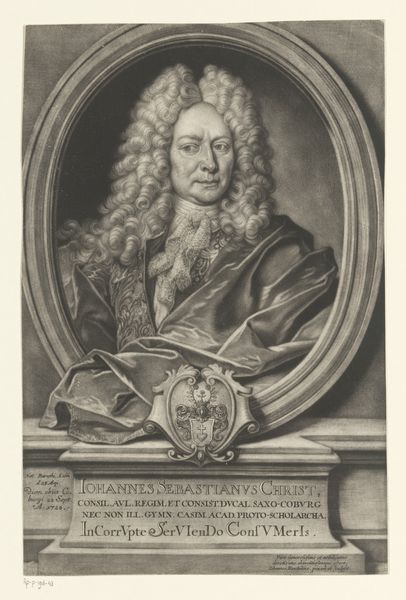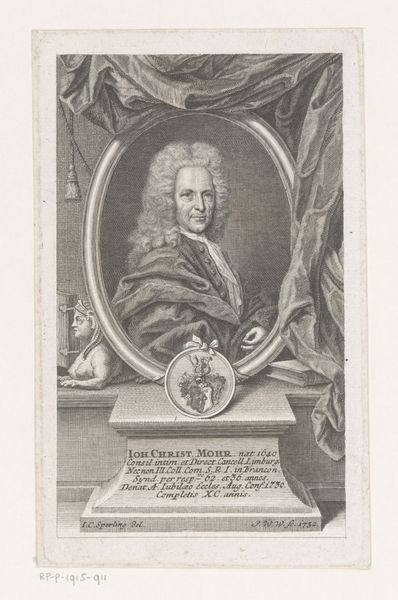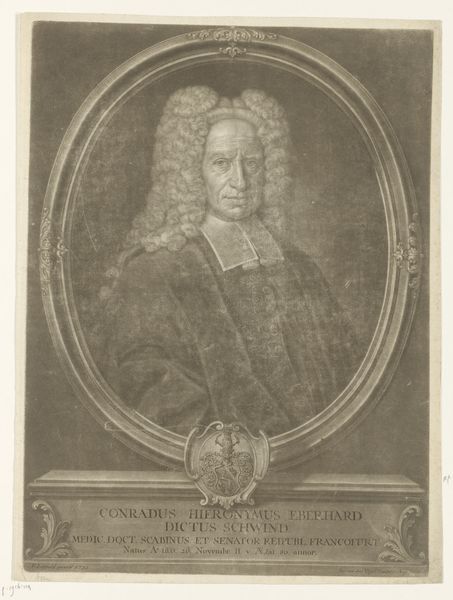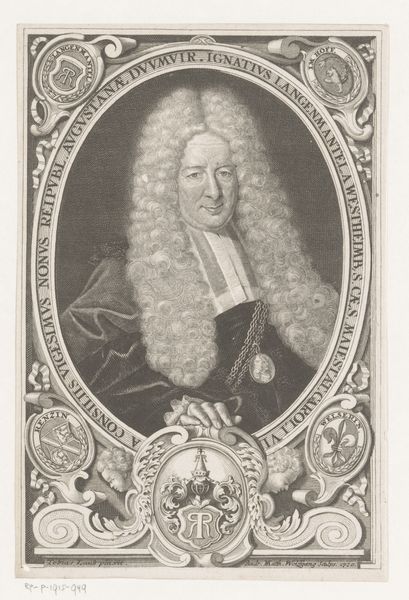
Dimensions: height 387 mm, width 265 mm
Copyright: Rijks Museum: Open Domain
Curator: This engraving by Ferdinand Stenglin, made between 1738 and 1799, depicts Johannes Cunradus Helwer. It’s rendered in a Baroque style, showcasing intaglio and engraving techniques. Editor: My first thought? It’s intensely serious, yet oddly ornate. All that swirling hair and those plump cherubs feel theatrical, like life is being presented as a carefully staged event. Curator: Stenglin created this piece in a historical context where portraiture served to solidify social status. Note how the engraving process itself—a painstaking, meticulous art form—lends gravitas and permanence to Helwer's image. The inclusion of Latin phrases adds another layer of scholarly authority, reinforcing Helwer’s own importance as a councilor. Editor: Those phrases...it’s interesting how the inscription both praises his intellectual abilities, with references to wisdom and insight, and hints at a melancholic disposition ("Hellowers mens gemerosa capit" – "Helwer's mind seizes anxieties"). The combination paints a fascinatingly complex character, a thinker grappling with the weight of knowledge perhaps? Curator: It highlights a tension inherent in public imagery, between projecting authority and acknowledging human complexity. Consider the artistic conventions of the time; Baroque portraiture frequently combined idealised features with realistic details. In Helwer's case, while the overall composition suggests dignity, the artist hasn’t shied away from depicting wrinkles or the set of the mouth, little details that reveal character. Editor: And those little cherubs holding up what appears to be an hourglass? It adds to the sense of fleeting time. They appear so blasé for something that symbolizes the time that’s passed and keeps on passing. A somewhat morose reminder in the swirl of formality. It asks whether seriousness is just a way to cover the sense of urgency around limited time. Curator: That is an insightful point. Art like this doesn’t simply reflect a person but actively constructs an identity, playing on both aspiration and a recognition of mortality, a tension so central to the baroque period. Editor: Right, so we’re seeing not just Johannes Cunradus Helwer, but an idea of him, molded by artistic tradition and societal expectation. I appreciate the layers and the tiny contradictions held inside of them. Curator: Indeed. It reveals how representation and social function coalesced in eighteenth-century Europe. It prompts one to think about the performance of identity and how imagery has historically supported it.
Comments
No comments
Be the first to comment and join the conversation on the ultimate creative platform.
